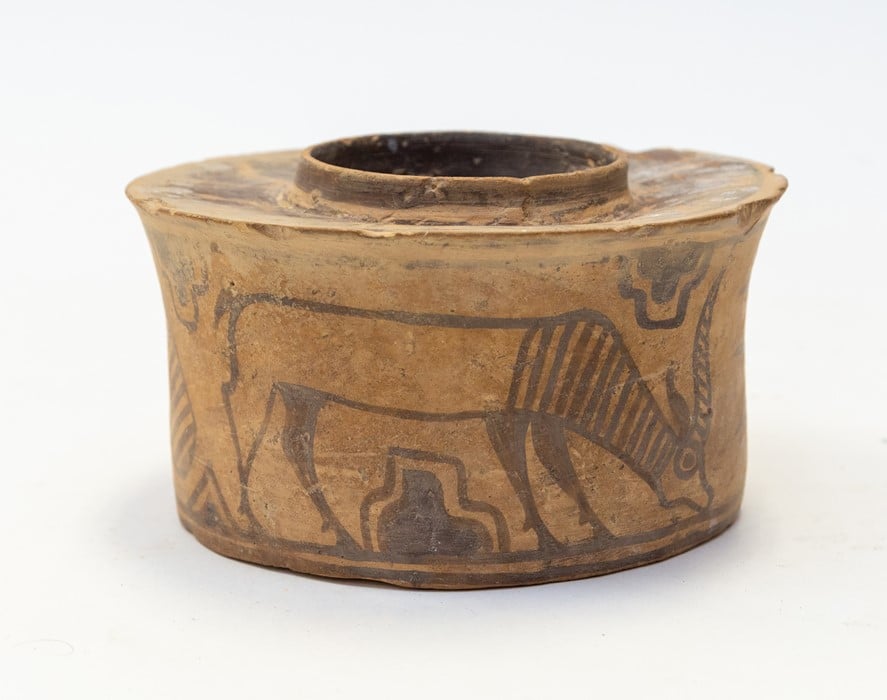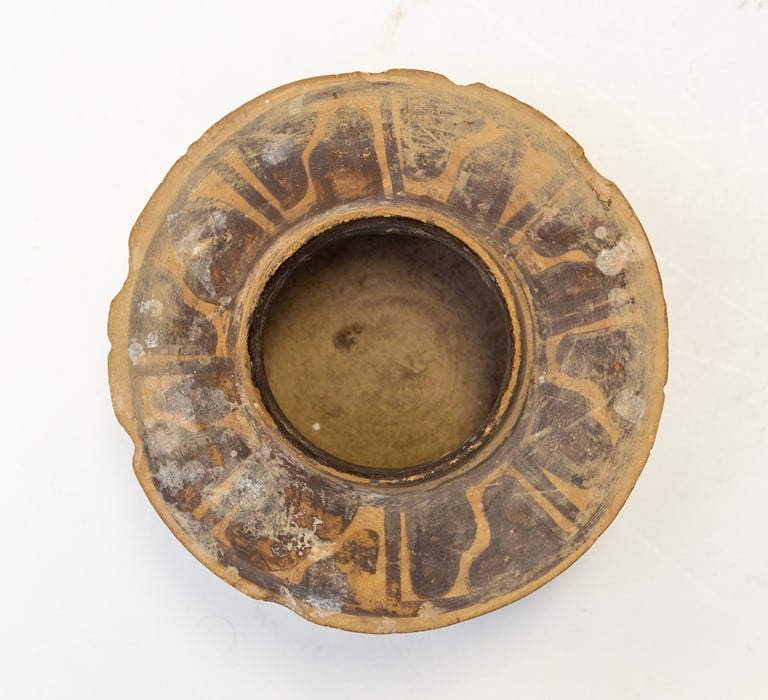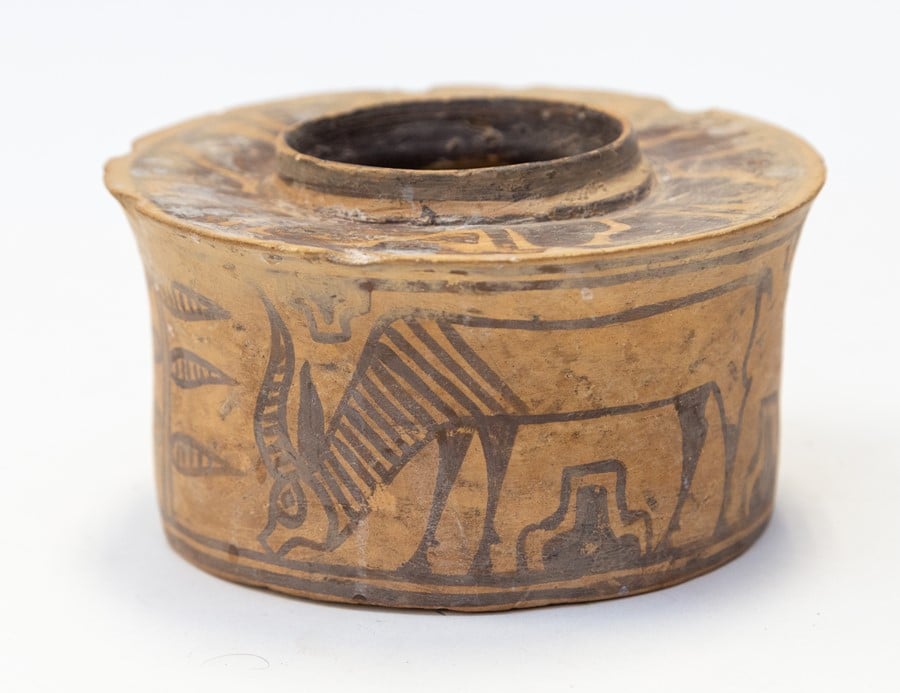Auctions
A British Auction-House Employee Used a 4,000-Year-Old Pot He Bought for $6 to Store His Toothbrushes
It later sold at auction for a 2,000 percent profit.

It later sold at auction for a 2,000 percent profit.

An auction house employee in the UK was helping unload a delivery at work one day when he realized that some ancient pottery from Afghanistan, set to hit the auction block, bore a striking resemblance to the old clay pot he had been storing his toothbrush in. He soon learned that his piece, purchased for just £4 ($6), was a genuine antique created 4,000 years ago.
It was quite an unexpected discovery for Karl Martin, who works for Hansons Auctioneers in Etwall, Derbyshire, and had purchased the unassuming piece of pottery five years ago at a car boot sale, a popular kind of UK flea market in which vendors sell goods out of the trunk of their car.
“I liked it straight away,” he told the BBC. “I suspected it might be very old but forgot all about it.” Martin even admits that he may have gotten some toothpaste stains on the antiquity while it was pressed into service in his bathroom.
“I specialize in British history rather than world history so I wasn’t an expert in this field and was none the wiser,” Martin told Metro.

An unsuspecting auction house employee was using this 4,000-year-old pot as a toothbrush holder until he spotted some similarly looking antiquities at work and had the piece examine by an expert. Photo courtesy of Hansons Auctioneers.
It was Hansons’ antiquities expert, James Brenchley, who identified the piece as the work of the Bronze Age Harappan civilization in the Indus Valley, a region of modern Afghanistan known as a cradle of early civilization. “It was probably brought back to the UK years ago by wealthy travelers,” he told the Daily Mail.
Once he knew what he had on his hands, Martin offered the pot at Hansons’ November antiquities auction. The auction house described the piece as “a well painted bubous [sic] shaped pottery jar with painted decoration depicting an antelope and motifs,” dating it to 1,900 BC.

An unsuspecting auction house employee was using this 4,000-year-old pot as a toothbrush holder until he spotted some similarly looking antiquities at work and had the piece examine by an expert. Photo courtesy of Hansons Auctioneers.
The pot sold for £80 ($100), at the top end of its pre-sale estimate. Sure, it’s not exactly a fortune, but it still amounts to a 2,000 percent profit. Can you say the same of your toothbrush holder?